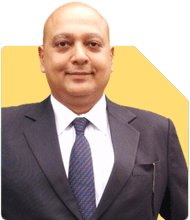Ulhas Joshi | Answer |Ask -Follow
Mutual Fund Expert - Answered on Jul 05, 2023
Prior to joining RankMF as CEO, he was vice president (sales) at IDBI Asset Management Ltd.
Joshi holds an MBA in marketing from Barkatullah University, Bhopal.... more

Hello Sir, I'm 33 years old. Planning to start SIP of 15k per month. Kindly suggest MF, so that i can make a corpus of around 15 Lakhs in 5 yrs .
You can consider starting SIP's in:
1-Edelweiss NIFTY 100 Quality 30 Index Fund-Rs.4,250
2-DSP Quant Fund-Rs.4,250
3-SBI Blue Chip Fund-Rs.4,250
4-UTI Flexi Cap Fund-Rs.4,250
You may like to see similar questions and answers below
Ulhas Joshi | Answer |Ask -Follow
Mutual Fund Expert - Answered on Jun 30, 2023
Ramalingam Kalirajan |8285 Answers |Ask -Follow
Mutual Funds, Financial Planning Expert - Answered on Apr 30, 2024
Ramalingam Kalirajan |8285 Answers |Ask -Follow
Mutual Funds, Financial Planning Expert - Answered on Jul 25, 2024
Ramalingam Kalirajan |8285 Answers |Ask -Follow
Mutual Funds, Financial Planning Expert - Answered on Jan 20, 2025
Radheshyam Zanwar |1563 Answers |Ask -Follow
MHT-CET, IIT-JEE, NEET-UG Expert - Answered on Apr 24, 2025
Sushil Sukhwani |594 Answers |Ask -Follow
Study Abroad Expert - Answered on Apr 24, 2025
Sushil Sukhwani |594 Answers |Ask -Follow
Study Abroad Expert - Answered on Apr 24, 2025
Sushil Sukhwani |594 Answers |Ask -Follow
Study Abroad Expert - Answered on Apr 24, 2025
Patrick Dsouza |1029 Answers |Ask -Follow
CAT, XAT, CMAT, CET Expert - Answered on Apr 24, 2025
Nayagam P P |4455 Answers |Ask -Follow
Career Counsellor - Answered on Apr 24, 2025
Patrick Dsouza |1029 Answers |Ask -Follow
CAT, XAT, CMAT, CET Expert - Answered on Apr 24, 2025
Mayank Chandel |2236 Answers |Ask -Follow
IIT-JEE, NEET-UG, SAT, CLAT, CA, CS Exam Expert - Answered on Apr 24, 2025
Nayagam P P |4455 Answers |Ask -Follow
Career Counsellor - Answered on Apr 24, 2025
Mayank Chandel |2236 Answers |Ask -Follow
IIT-JEE, NEET-UG, SAT, CLAT, CA, CS Exam Expert - Answered on Apr 24, 2025





















